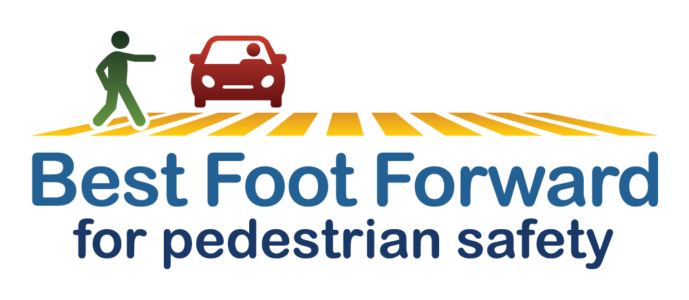On e of the least enforced, most ignored laws on Orlando’s books says it is illegal to ride a bike on the sidewalk within the city limits.
e of the least enforced, most ignored laws on Orlando’s books says it is illegal to ride a bike on the sidewalk within the city limits.
There are exceptions, such as bike- and pedestrian-only paths, but regular, old sidewalks are off-limits. The rule has been around since the 1960s and carries a fine of $62.50.
It has not stopped bicyclists from regularly using sidewalks, even within plain sight of Orlando police officers, including Officer Terrethe Gordon.
She said she may have written a warning or two in her seven years on the job, but never a ticket to a cyclist on the sidewalk. The reason for letting the law slide, she said, is that many bikers are afraid to ride on the streets.
Orange County Clerk of Courts statistics back up Gordon. Since 2000, only one ticket has been written for the offense.
The sidewalk cycling ban is fairly uncommon in Central Florida, said Mighk Wilson, a planner and bike advocate at MetroPlan Orlando, which sets transportation policy in Orange, Osceola and Seminole counties.
Wilson said biking is illegal on Park Avenue in Winter Park, but he could not think of any city other than Orlando with a communitywide sidewalk ban.
Courtney Bass, a grade-school teacher, often rides her beach-cruiser bike on Orlando sidewalks.
Some streets are too narrow to accommodate bikes and cars, she said. Other roads are made of bricks, making the ride uncomfortable. And, lots of times, the traffic is too thick, she said.
“It’s common sense,” said Bass, 37.
And as someone who also is a motorist, Bass said, she hates to be stuck behind a cyclist who is riding in the middle of the lane.
“As a driver,” she said, “I find it annoying. You’re [the cyclist] not a car.”
Many cycling experts maintain that the road is the safest place for a bike, not the sidewalk — which they maintain is dangerous because of often-uneven pavement, motorists who are not expecting a bike pulling out of driveways in reverse and frequently oblivious pedestrians.
Downtown sidewalks, they say, are especially risky because they can be filled with shoppers, tables, and stores showcasing their wares outdoors.
“You’ve got nowhere to go,” said Becky Afonso, director of the Florida Bicycle Association.
If a cyclist is on the road and takes control of the lane, rather than riding by the curb, motorists will see them and not be tempted to pass too closely, Afonso said. State law mandates cars must allow a bike three feet of clearance while passing.
Yet, Afonso said, she realizes many cyclists are like Bass and are just not comfortable riding with cars around them.
Tania Torres Tanski often rides on the street, particularly when she is on a long workout while training for a triathlon. But when she is riding with her 6-year-old daughter, Anika, she sticks to the sidewalk.
“I’d rather she fall on the sidewalk than on the road,” said Torres Tanski, 39, a personal trainer who likes to ride with Anika from their Fern Creek area home to Lake Eola Park downtown.
Torres Tanski said she is hyper-vigilant with her daughter, constantly scanning the sidewalk for cars backing up, walkers and obstructions.
“It really is an obstacle course,” she said of the sidewalk.
Steve Noto, a Lake Mary planner and bike advocate, said most cities are trying to incorporate biking and walking into their new developments by designing streets to handle cyclists and mandating sidewalks.
Putting new homes close to places of employment and entertainment is key, Noto said, because that reduces the need to drive.
Cities, as well as the state Department of Transportation, also are trying to retrofit existing streets and subdivisions with traffic slowing devices and sidewalks to get people out of their cars, Noto said.
“People ride based on how comfortable they are,” Noto said, “whether that is on the street or the sidewalk.”
Afonso said education is important as well. Bikers and motorists need to understand that both can use the roads and coexist without antagonizing the other.
“It’s not just a car or a bike,” she said. “It’s people. We have got to start caring about people again.”
[email protected] or 407-420-5444.
Copyright © 2014, Orlando Sentinel




